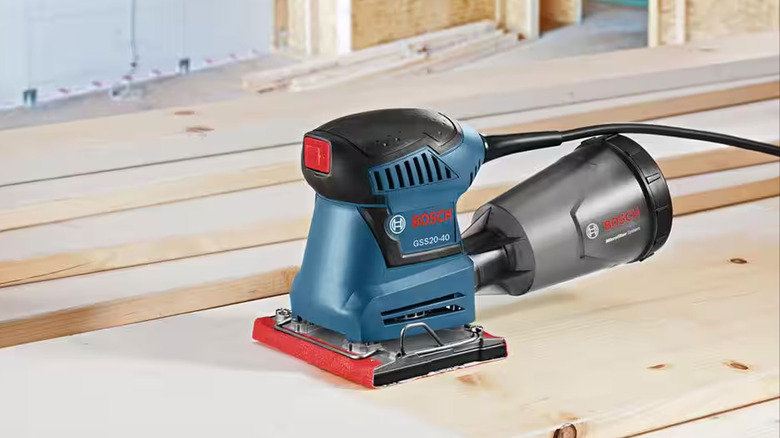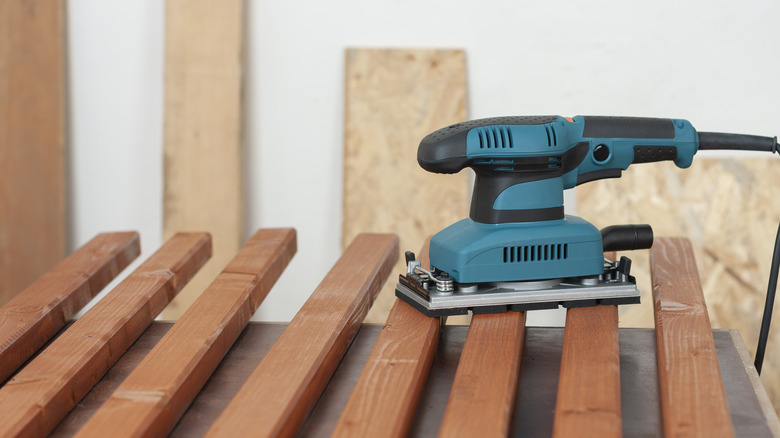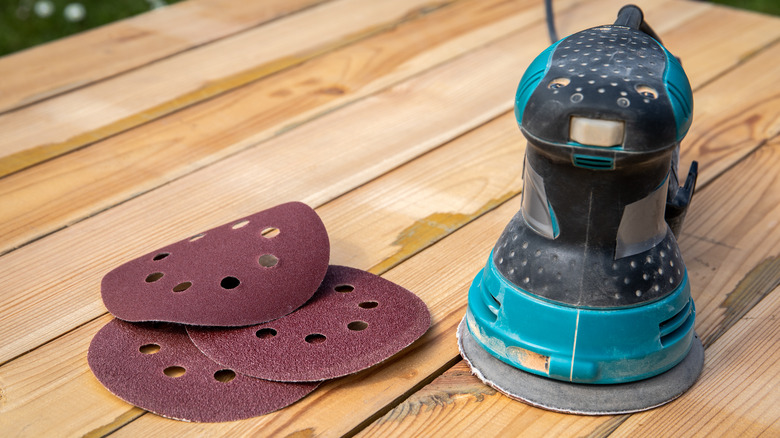Orbital Sander Vs. Random Orbit Sander: What's The Difference?
Whether it's a professional workshop or your average weekend warrior's residential tool cabinet, it's incomplete without a sander. There are several variations of sander, from simple blocks to belt and disc sanders. These tools can be used to prepare or finish materials like wood or metal. There are more than a couple Harbor Freight sanders that can help with prep for your next big project.
One of the most versatile sander types is the orbital, which comes in both corded and battery-powered flavors. However, this handy tool has one confusing aspect: You'll see them for sale described as "orbital" and "random orbital" sanders. What is the difference, and which sander is better?
The orbital sander rotates the sanding pad in a circle, helping you soften uneven surfaces and round corners. A random orbital sander also spins the gritted pad in a circular motion but adds a random oscillating movement with a rotating disc at the bottom of the tool. While both versions of this tool share several similarities, the results aren't identical, and neither is the price. However, according to Verified Market Research, the random orbital sander market is growing and is projected to reach $2.82 billion by 2032.
Orbital sander: square, cheaper, and less destructive
One look and you can typically identify an orbital sander versus a random orbital by the shape of its backing pad. Orbital (also referred to as palm sanders, finishing, or sheet sanders) typically come with a square sanding pad, while the random orbital comes with a circular backing pad, though some detail sanders may have a pointed design that looks like a triangle rather than a square. The advantages of the square sanding area become evident when you need to smooth inside corners, as the square shape can reach places the round backing cannot.
Orbital sanders are usually cheaper and start as low as around $25 and go as high as $259 for larger, more industrial versions of the tool. Conversely, random orbital units start at $30 and go upwards of $329, indicating that for a mid or high-range unit, you'll likely spend more for a random orbital than an orbital sander. It's not just the tool itself that varies in price; the sanding pads also factor into the cost. Speaking of costs, building a professional tool kit on a budget, which should include at least one powered sander, can be challenging but possible with money-saving tips.
Although square and round sanding sheets seem fairly similar in cost, when you realize that random orbital sanders come equipped with more potent motors, it becomes clear that you'll likely go through more random orbital discs than you will square sanding sheets.
Random orbital sander: no marks, less dust, better removal
The random orbital sander corrects one of the most significant complaints from those using an orbital or palm sander: Swirling marks left on the project surface after use. The combination of both a circle motion and slower back and forth movement helps eliminate any patterns left in the wood by sanding in many different directions. Though it's still possible, you're much less likely to get swirled scratches on the surface of the wood.
Many orbital and random orbital sanders feature several holes set symmetrically throughout the pad. These holes in the sanding disc line up with the backing pad and removes dust as you work. The dust goes into either a built-in debris container or directly into a vacuum you can connect to the tool. This dust collection method reduces airborne particles that negatively affect healthy breathing and visibility.
If you need to remove quite a bit of material from the surface of your project, the random orbital sander is the better choice. With typically greater power, the random orbital can strip unwanted layers quickly and make for a more aggressive sanding session. The orbital or palm sander just can't keep up against the random orbital on rougher material without experiencing tearing. For tough jobs, these Makita sanders can help whip rough surfaces back into shape, saving you time with high RPMs and powerful motors.


